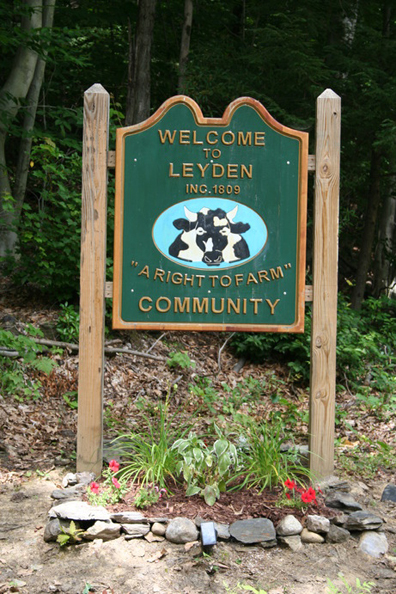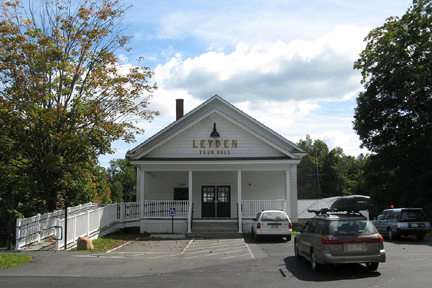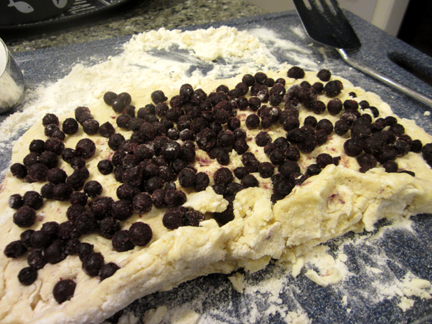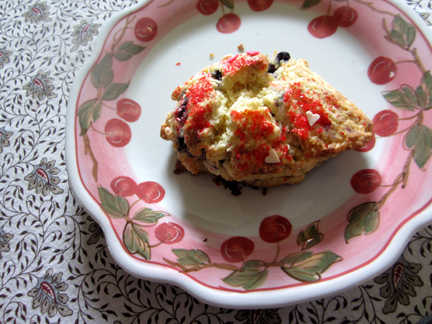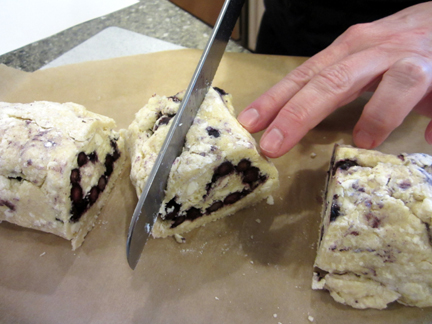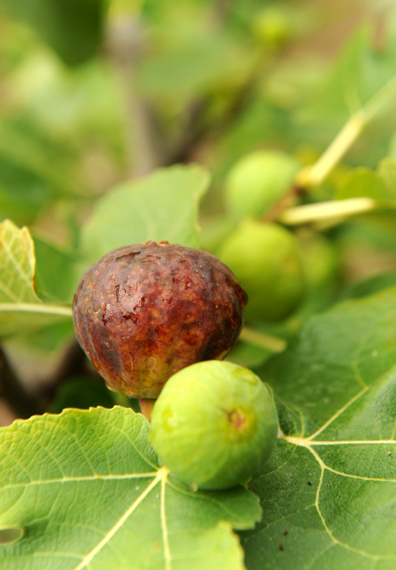
A black fig ripens on the tree at Dancing Bear Farm in Leyden, Massachusetts. Courtesy of the Recorder/Paul Franz.
The harvest season is over in Western Massachusetts—although local produce still abounds: apples, cabbages, squash. At this time of year farmers have the mental and physical energy to plan for next year. Best of all, they find time to dream.
At Dancing Bear Farm in Leyden Tom Ashley and his wife, my fellow journalist Trish Crapo, are dreaming of something they will call the figtorium.
The figtorium will be a greenhouse designed to accommodate Tom’s growing fig harvest. Dancing Bear Farm has been in business for 25 years, but Tom grew his first figs only eight years ago.
When I spoke recently with the couple, Tom explained that his love of figs began in the fall of 2008. He was inspired by a longtime customer named Marie. (He didn’t think she would want her last name reported.)
A teacher who lives in Brooklyn, Marie has a second home in Leyden. She has been a loyal customer of Dancing Bear since the farm started in 1981.
“She is Italian American and lives in an Italian neighborhood,” Tom told me. “Everybody there has their fig trees and their grapes and a small garden [of plants] that they brought from the old country.
“We’ve had a very nice relationship over the years of sending stuff home with her in the fall, garlic for her neighborhood. Eight years ago she brought me four dead sticks and said, ‘Here, put these in the greenhouse, and see what happens.’
“At that point I knew nothing of figs. They sat around the greenhouse for a couple of weeks.”
He received a phone call from Marie, urging him to plant the sticks.
“I said, ‘Yeah, sure. Figs. All right, Marie,’” Tom remembered.
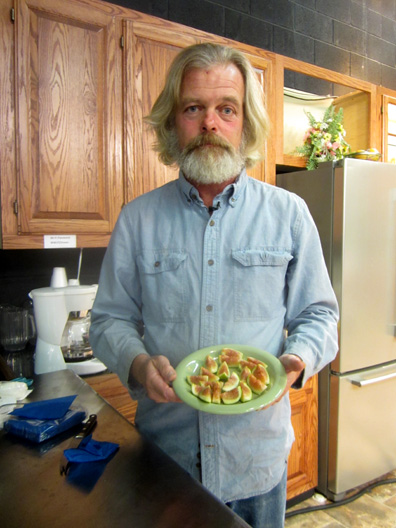
Tom Ashley with some of his figs.
The sticks went into the ground. Two of the four took root, combined themselves into one large tree, and began producing fruit the following spring. The tree is still going strong today.
Tom said he was impressed when he tasted the fruit. “I had never experienced anything like that before,” he said. “I’d had dried figs or Fig Newtons…. It was very different from any other fruit. Very sweet.”
“Sweet but light,” chimed in Trish Crapo.
Tom discovered that his fig tree grew quickly. Soon it hugged the ceiling of his plastic greenhouse. “I had to prune the tree. It just took off like a sumac,” he recalled. “Whatever [cuttings] I took off the tree, I thought, ‘Those will grow, too.’”
He placed the cuttings in pots. “The next year, I had more figs and all these trees growing in pots.”
Soon Tom began doing research about fig trees. Native to many areas of the world and cherished particularly in the Middle East and the Mediterranean region, figs are an ancient plant.
They are also a healthy fruit—full of antioxidants. They contain ingredients that can help fight cancer, obesity, osteoporosis, and many other diseases.
“A fig may have been the fruit in the Garden of Eden, not an apple,” Trish Crapo informed me. In the warmer climates of figs’ native habitat they grow profusely outdoors.
I had never seen figs growing so I enjoyed visiting Dancing Bear Farm in late October to see what all the fuss was about. Tom Ashley’s fig trees were then lush and tall. The winding wood was pleasing to the eye, and the large leaves were highly decorative.
“No wonder they used to wear them back in the old days,” Tom told me with a smile.
He picked a fig off a tree for me to taste on the spot. Figs are unusual in that they don’t flower. Their flowers are actually the inside of the fig. My fig tasted sweet and rich. The skin, fruit, and seeds provided a nice combination of textures.
Tom and Trish first met at Hampshire College, where Tom managed the coop and was among the first people to think of starting an organic garden on a college campus.
“We already valued sustainability and local agriculture in 1980,” Trish said proudly.
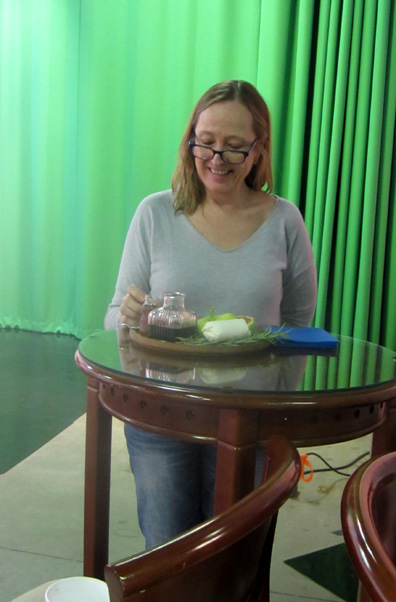
Trish arranges figs on a plate.
After college the two looked for a plot of land of their own. They fell in love with the land that would become Dancing Bear Farm, which has a spectacular view of the Pioneer Valley. Soon they set down literal and figurative roots.
Looking forward, Tom sees his fig cultivation and the planned figtorium as key. He admitted that he could repair his current plastic greenhouse instead of constructing a new one. He sees defects in this plan, however.
“The greenhouse isn’t quite big enough for the trees, and it’s a little tight on the sides,” he observed. “Why would you put new soles on a pair of shoes that didn’t really fit you?”
With the figtorium—a larger, non-plastic greenhouse—he will be able to accommodate his fig trees and expand his fig crop. He hopes that figs will become one of three or four strong crops on which he can concentrate in future.
This concentration will strengthen his crops and give him more time to do the educational outreach he has already begun through newsletters to customers.
At the moment he sells both figs and fig trees. Eventually, he would like to work with etymologists to do research on the fig wasp—a miniscule insect that helps figs spread in the wild. He would also like to experiment with farming methods that might help fig trees survive in colder weather.
Tom hopes that the figtorium will make his life richer, more interesting, and less physically stressful.
“I want his life to be a lot easier,” Trish said of her husband. “He works really hard.”
Meanwhile, Tom takes pride in his figs and fig trees. Several years ago, he told me, his friend Marie brought him a new fig-tree cutting from friends who were visiting from Sicily. When the friends returned to the United States a couple of years later she brought them to Dancing Bear Farm.
The friends don’t speak English so not a lot was said. Nevertheless, Tom informed me, they managed to give him two thumbs up when they saw the tree their cutting had produced.
“We communicated back and forth our mutual respect. Marie told me later that my tree was doing better [than the one her friends had] back in Sicily,” he recalled.
“Somewhere along the line I seem to have developed a fig thumb.”
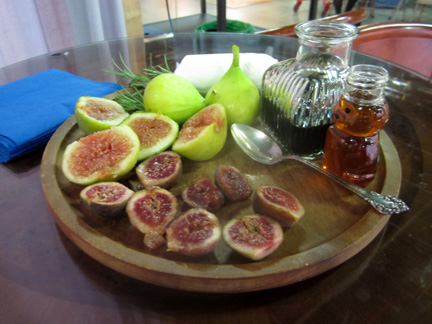
Tom Ashley and Trish Crapo frequently experiment with fig cookery. “In a way we’re in a unique position that most people are not in,” Trish told me. “We have too many figs. It’s a wonderful challenge.” They report that even the leaves can be used in cooking, to wrap around foods.
The pair gave me some figs to play with—and I remembered that years ago my graduate-school roommate Alice Gagnard and I used to receive care packages of fig jam from her mother in Alexandria, Louisiana.
I don’t have Louise Gagnard’s recipe—she unfortunately died while I was doing research for this article—but when Tom Ashley gave me some frozen figs I concocted my own version of the jam as a memorial tribute to Louise. She always had a pot of coffee on the stove and a smile on her face.

Louise raising a glass of sparkling cider. (Courtesy of Alice Gagnard Kendrick)
Fig Jam inspired by Louise Gagnard
Ingredients:
6 cups chopped figs, packed
4-1/2 cups sugar
the juice of 1 large lemon (if you really love lemon flavor, use the zest as well)
a dab of butter
Instructions:
In a 4-quart Dutch oven combine the figs, the sugar, the lemon juice, and the zest if you are using it. Mash the figs a bit with a potato masher. (They don’t have to be completely mashed.) Allow the mixture to sit for at least 1/2 hour to enable the figs to juice up a bit.
Stir again, turn on the stove, and bring the mixture to a boil, adding just a little butter to minimize foam. Reduce the heat and simmer the jam, stirring from time to time, until the jam becomes thick and starts to gel.
Test for gelling by using a candy thermometer (the mixture should come to 220 degrees Fahrenheit or a little under) or by inserting a cool metal spoon in the jam. When the jam comes off the spoon in sheets it is done.
Turn off the heat and stir the jam for five minutes to make sure that the figs are evenly dispersed throughout. Ladle the jam into sterilized jars, and process the jars in a boiling-water bath for 10 minutes. If you don’t want to process the jars, you may keep the jam in a Used Stainless Steel Three Door Commercial Freezer for a couple of months.

I’m enjoying my fig jam!
